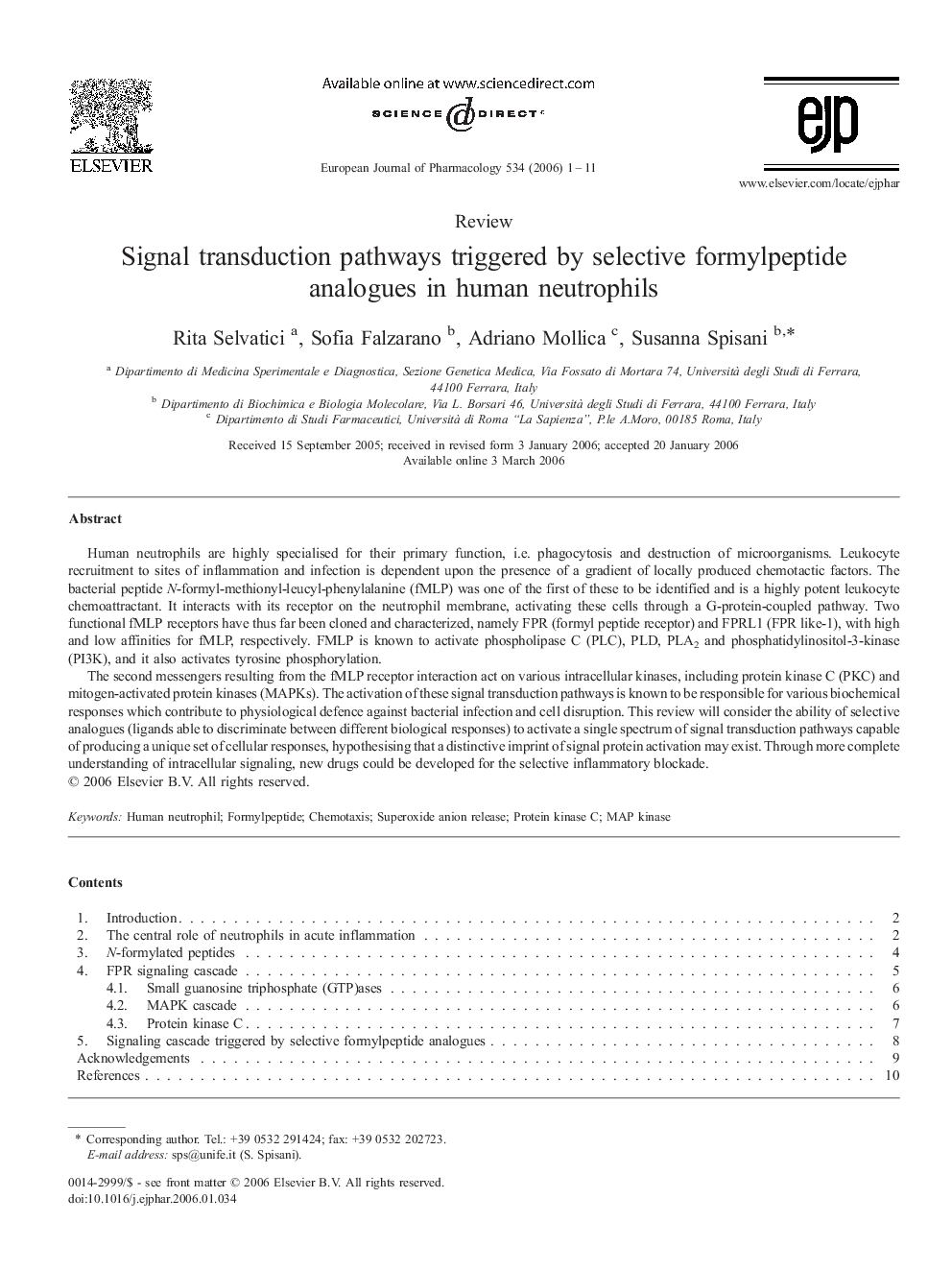| Article ID | Journal | Published Year | Pages | File Type |
|---|---|---|---|---|
| 2537463 | European Journal of Pharmacology | 2006 | 11 Pages |
Human neutrophils are highly specialised for their primary function, i.e. phagocytosis and destruction of microorganisms. Leukocyte recruitment to sites of inflammation and infection is dependent upon the presence of a gradient of locally produced chemotactic factors. The bacterial peptide N-formyl-methionyl-leucyl-phenylalanine (fMLP) was one of the first of these to be identified and is a highly potent leukocyte chemoattractant. It interacts with its receptor on the neutrophil membrane, activating these cells through a G-protein-coupled pathway. Two functional fMLP receptors have thus far been cloned and characterized, namely FPR (formyl peptide receptor) and FPRL1 (FPR like-1), with high and low affinities for fMLP, respectively. FMLP is known to activate phospholipase C (PLC), PLD, PLA2 and phosphatidylinositol-3-kinase (PI3K), and it also activates tyrosine phosphorylation.The second messengers resulting from the fMLP receptor interaction act on various intracellular kinases, including protein kinase C (PKC) and mitogen-activated protein kinases (MAPKs). The activation of these signal transduction pathways is known to be responsible for various biochemical responses which contribute to physiological defence against bacterial infection and cell disruption. This review will consider the ability of selective analogues (ligands able to discriminate between different biological responses) to activate a single spectrum of signal transduction pathways capable of producing a unique set of cellular responses, hypothesising that a distinctive imprint of signal protein activation may exist. Through more complete understanding of intracellular signaling, new drugs could be developed for the selective inflammatory blockade.
